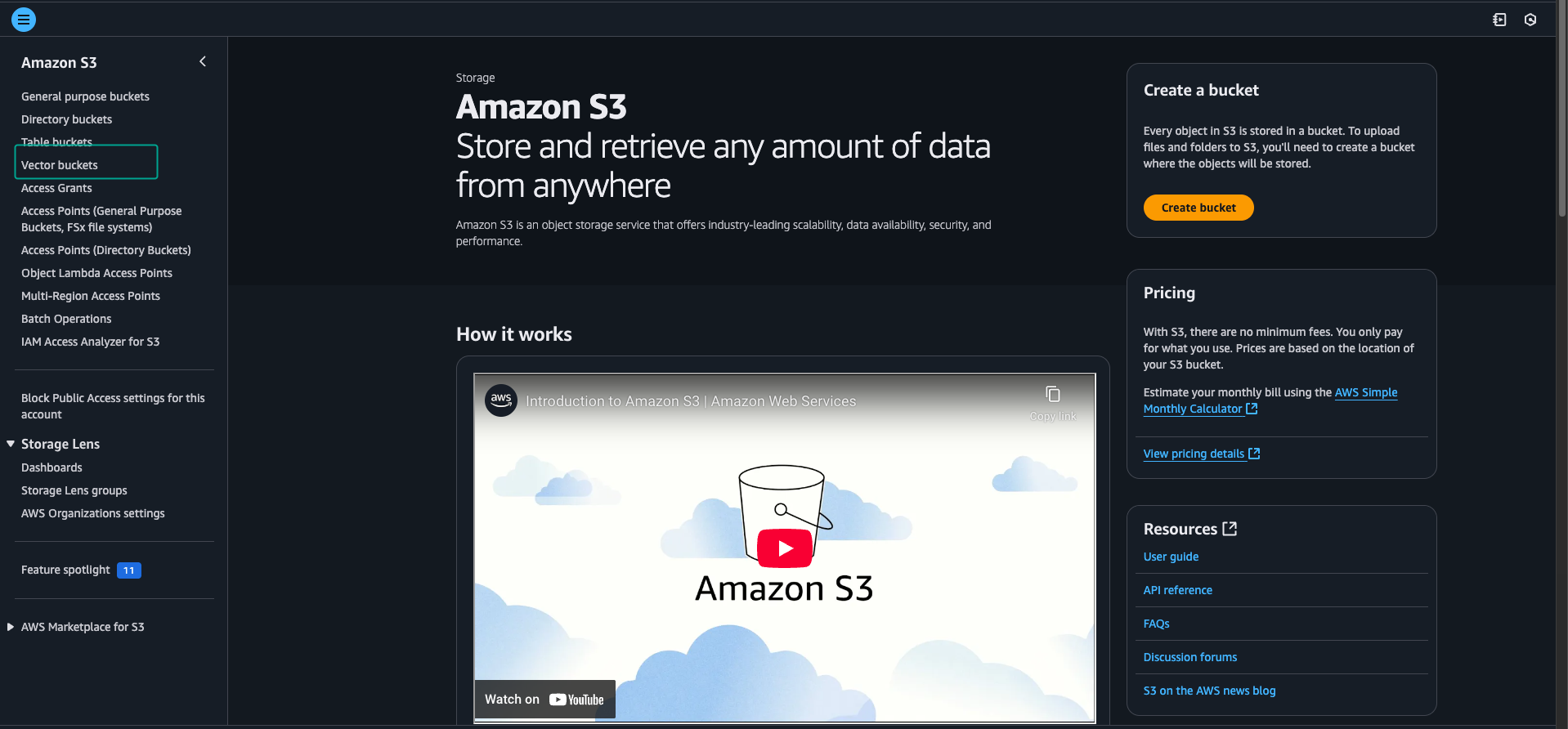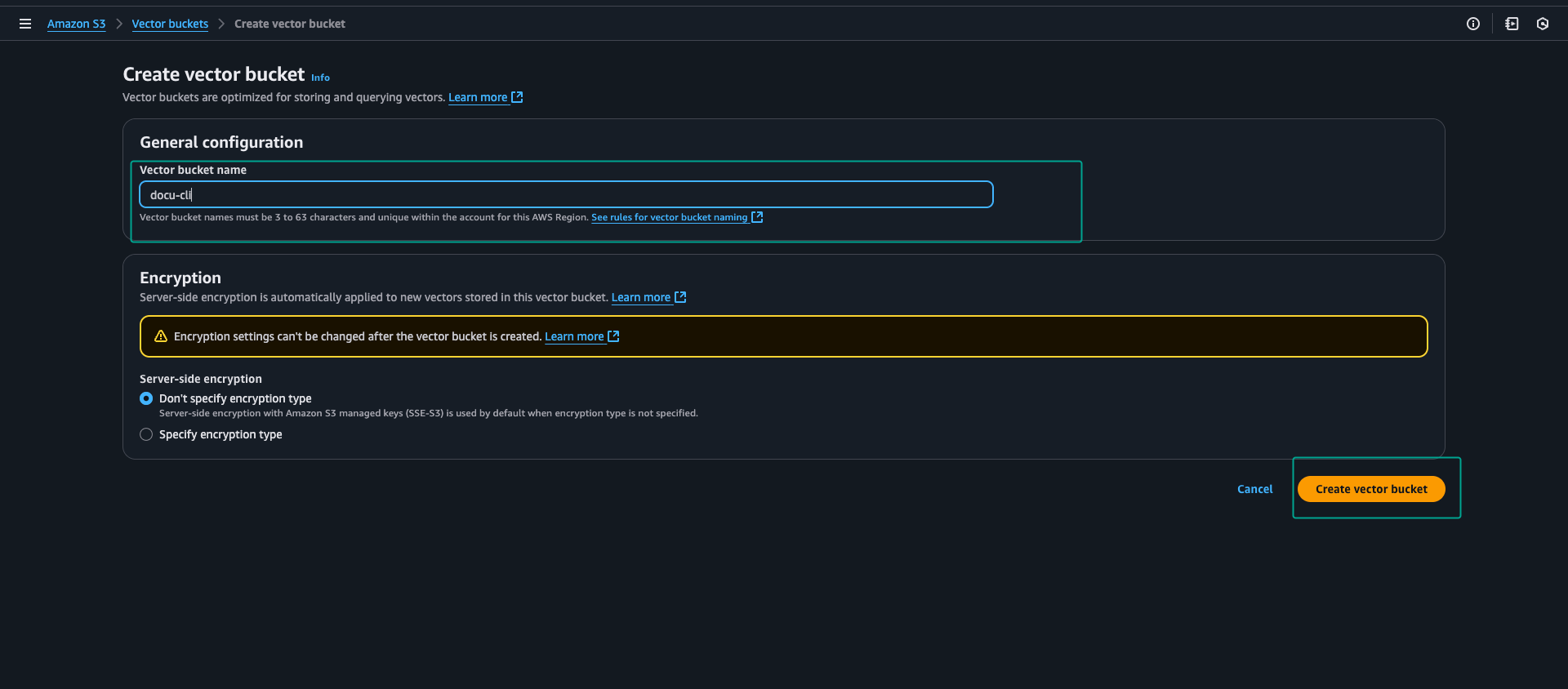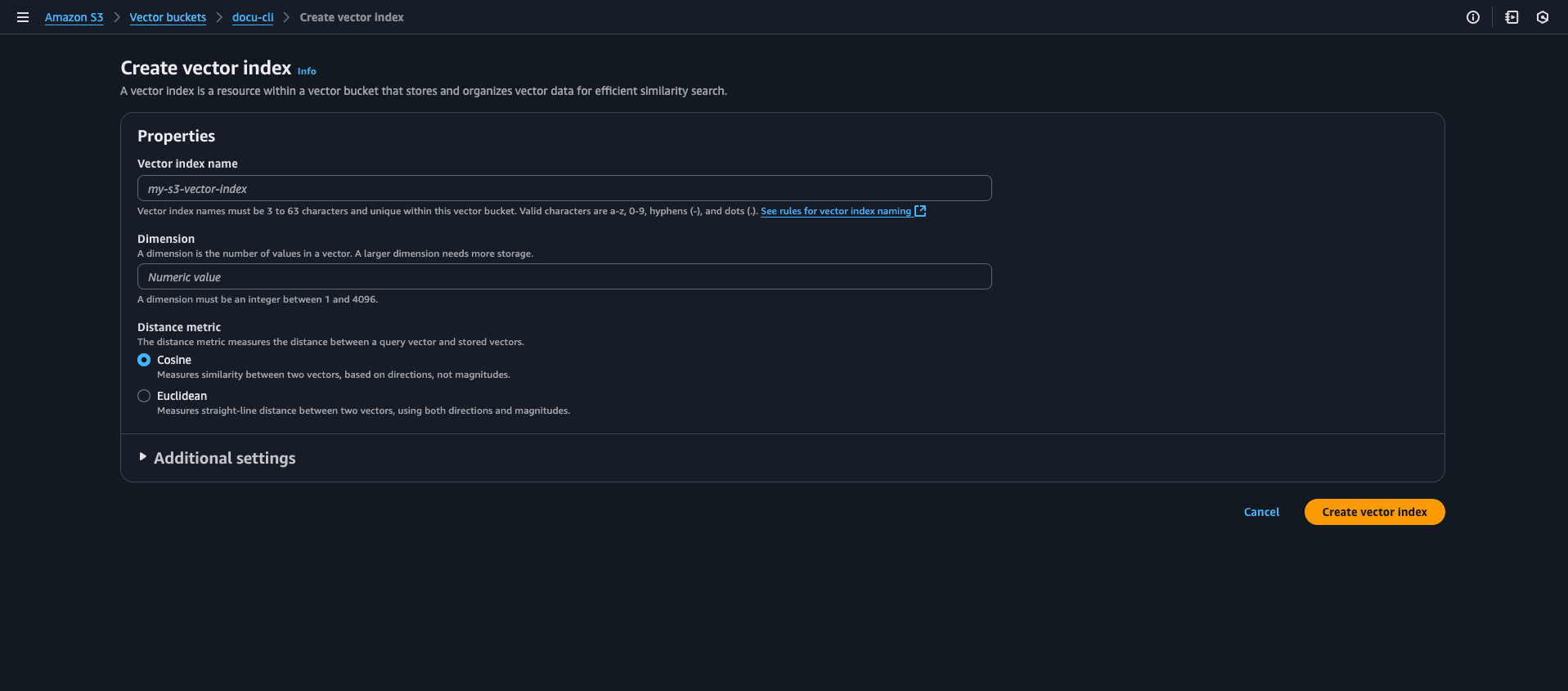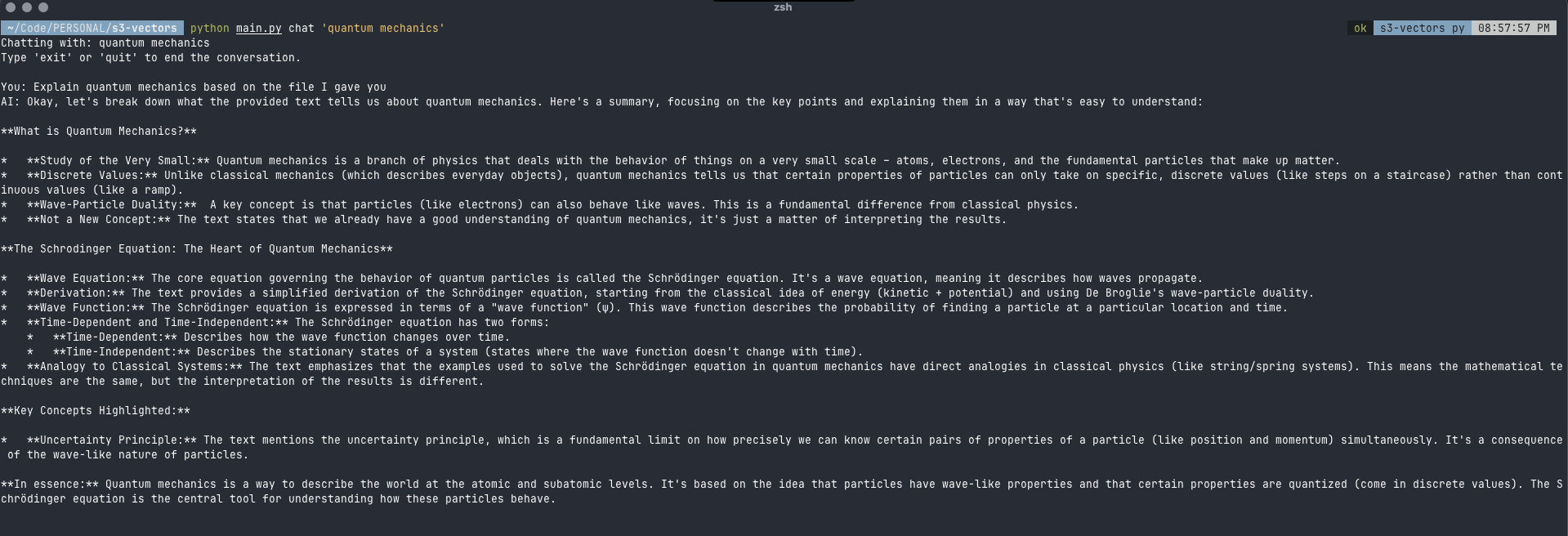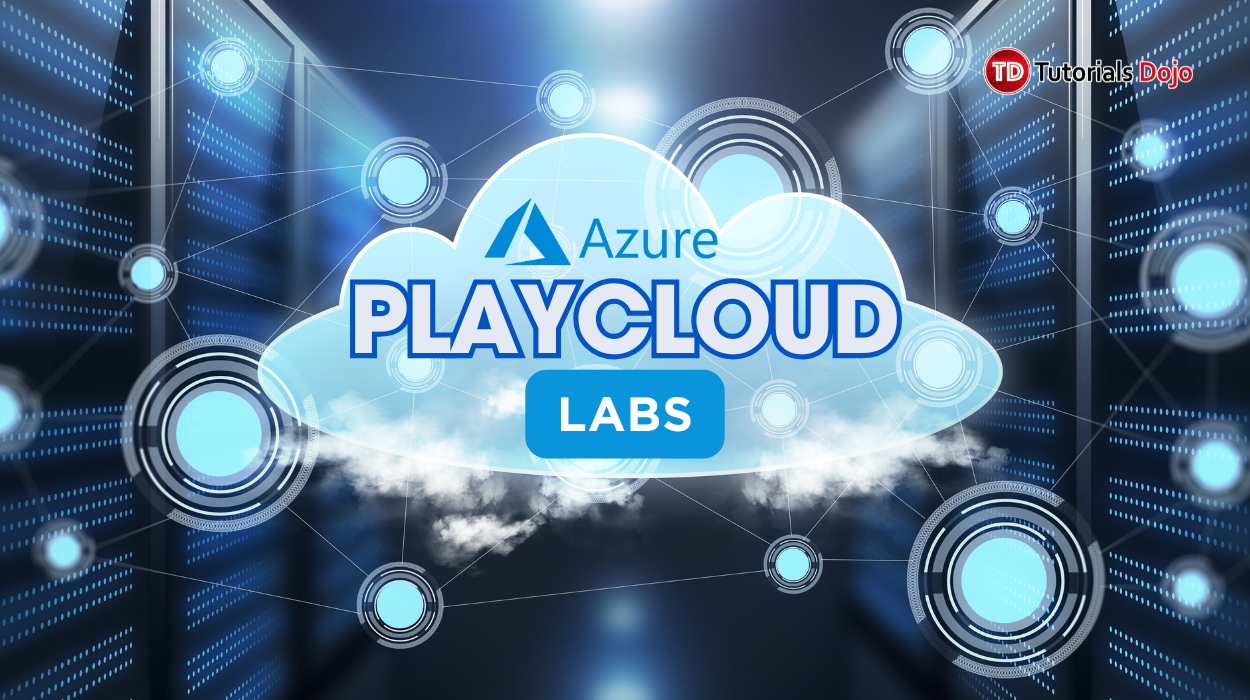The world of generative AI is evolving at a rapid pace and one of the most powerful and practical applications is Retrieval-Augmented Generation (RAG). RAG enhances Large Language Models (LLMs) by giving them access to external, up-to-date knowledge bases. This allows them to generate more accurate and context-aware responses. Traditionally, building a RAG system required setting up and managing a separate vector database that adds complexity, cost, and a new layer of infrastructure to maintain however with the introduction of Amazon S3 Vector Buckets a new paradigm has emerged: zero-infrastructure vector search. Amazon S3 is a highly scalable, durable, and cost-effective object storage service.With its new native vector support (preview), S3 is no longer just a passive data lake. It now functions as a serverless vector search engine. This means you can store, index, and query vector embeddings directly in your S3 buckets, eliminating the need for a separate and dedicated vector database. The key benefits of this approach are: This makes S3 Vectors an ideal solution for RAG applications that don’t require millisecond-level latency and can tolerate sub-second query performance in exchange for significant cost savings and operational simplicity. Head over to S3 in the AWS Console: Once you are logged in, navigate to the S3 service. Find the Vector Buckets tab: In the left-hand navigation pane, find and click on Vector Buckets. Create a Vector Bucket: In the dashboard, click on Create vector bucket. Give your bucket a unique name and click Create. You can leave the other settings as their defaults for this example. A vector index is a resource within a vector bucket that stores and organizes vector data for efficient similarity search. Each index can store vectors at scale and supports metadata filtering to refine search results. Vector indexes are purpose-built for: Cost-effective storage of large vector datasets Similarity queries Metadata filtering during queries Integration with Amazon Bedrock Knowledge Bases and Amazon OpenSearch Service When creating a vector index, you specify: Distance metric (Euclidean or Cosine) for measuring similarity. Number of dimensions for vectors. Optional non-filterable metadata keys. Each vector in an index consists of: A unique vector key The vector data Optional metadata (up to 40 KB per vector, with 2 KB limit for filterable metadata) Writes to vector indexes are strongly consistent, ensuring that subsequent queries include the most recently added data. You can attach metadata to vectors to filter future queries based on conditions like dates, categories, or user preferences. You can use bucket policies to grant or restrict access to specific indexes and vectors within your vector bucket. To create a vector index in the console, find the Vector indexes section and click Create vector index. Properties Vector index name: The name must be 3 to 63 characters and unique within this vector bucket. Valid characters are a-z, 0-9, hyphens (-), and dots (.). Dimension: A dimension is the number of values in a vector. A larger dimension needs more storage. A dimension must be an integer between 1 and 4096. Distance metric: The distance metric measures the distance between a query vector and stored vectors. Cosine: Measures similarity between two vectors, based on directions, not magnitudes. Euclidean: Measures straight-line distance between two vectors, using both directions and magnitudes. This practical example is a command-line interface (CLI) application that demonstrates a complete, end-to-end RAG workflow. It showcases how to leverage the new S3 Vector Buckets as a serverless vector store eliminating the need for a separate database. The script handles the entire process, from parsing PDFs and creating vector embeddings with a local model to storing those embeddings in S3 and then querying them to generate context-aware responses. This provides a clear runnable blueprint for building a scalable and cost-effective RAG solution. The following Python script demonstrates how to build a simple, local RAG application that leverages Amazon S3 Vectors. It uses Ollama for running the embedding and chat models locally, and the Learn More About Amazon S3 Vector
What is Zero-Infrastructure Vector Search?
Create a Vector Bucket and Understand Vector Indexes
Vector Indexes
Demo Time!
boto3 library to interact with the S3 Vectors API. This provides a powerful, scalable, and cost-effective way to build production-ready RAG applications.
Zero-Infrastructure Vector Search with Amazon S3 Vectors
AWS, Azure, and GCP Certifications are consistently among the top-paying IT certifications in the world, considering that most companies have now shifted to the cloud. Earn over $150,000 per year with an AWS, Azure, or GCP certification!
Follow us on LinkedIn, YouTube, Facebook, or join our Slack study group. More importantly, answer as many practice exams as you can to help increase your chances of passing your certification exams on your first try!
View Our AWS, Azure, and GCP Exam Reviewers Check out our FREE coursesOur Community
~98%
passing rate
Around 95-98% of our students pass the AWS Certification exams after training with our courses.
200k+
students
Over 200k enrollees choose Tutorials Dojo in preparing for their AWS Certification exams.
~4.8
ratings
Our courses are highly rated by our enrollees from all over the world.


